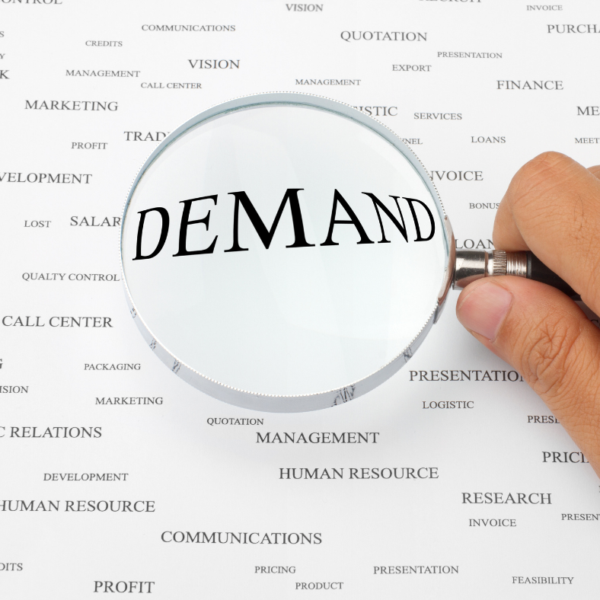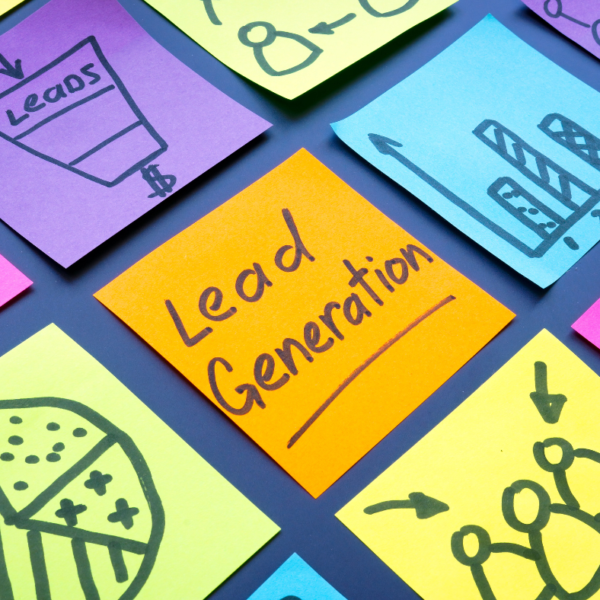If your business is interested in engaging with customers/clients or raising awareness about the products or services offered by your business, demand generation is one of the most efficient marketing strategies a business can implement. But a demand generation campaign should be executed and measured correctly in order for it to be effective.
The Eberly & Collard Public Relations integrated marketing team shared a blog outlining four strategies to increase b2b demand generation results in 2020. The blog article was one of our all-time most popular, having been clicked on and read many thousands of times. While the basic principles of demand generation have stayed the same since then, there have been several updates and advancements within the marketing world that have trickled down to enhance demand generation best practices and strategies. This blog will serve as a valuable second resource to execute a successful demand generation campaign.

What is Demand Generation?
Before you begin to plan your demand generation campaign, you must know exactly what demand generation is and involves. Demand generation is the inventive and strategic practice of creating interest in and demand for a business’ products and/or services; it is an education-focused marketing strategy to prioritize reaching “out of market” or non-existent buyers.
The ultimate goal of demand generation is to increase awareness of and demand for that which you and your colleagues sell. As a demand generation agency, we assist our clients in expanding their audiences, building brand authority for them, generating interest in their offers, and evoking market trust in their businesses.
Additionally, creating demand generation involves businesses aiming to keep buyers’ interest even when they are not in a “buying cycle” or mentality. Then, when leads and prospects are ready, your business, products and/or services are top of mind.
Demand Generation vs Lead Generation Explained

Demand generation is often confused with lead generation. While they are both highly effective – we’d even say, they are equally crucial – marketing practices, it is important to note that they are different and should be handled as individual strategies.
The key difference between demand generation and lead generation is the focus of interaction and the overall goal. Think of them this way…
Lead generation is a short-term, sales-focused marketing strategy that prioritizes identifying potential new customers and collecting their contact information. The goal of lead generation is to convert these newly identified prospects into leads, with the possibility of having them become clients or customers.
Conversely, demand generation concentrates upon building a deeper layer of brand authority while attracting and educating new audience members. Simply put, the primary goal of lead generation is to nurture targeted audience members throughout their entire pre-customer journeys, so they naturally are drawn to you and your business. The end result is the realization on their part that they cannot move forward without your products or services.
With that said, demand generation and lead generation can and often should work hand-in-hand. Lead generation supports demand generation by attracting new potential customers to learn more about your business and therefore be willing to become a client or purchase your products or services. When possible, one should prioritize demand generation over lead generation in order to reduce overall customer acquisition costs and maximize the quality of new leads. Work with your in-house sales and marketing team and a growth marketing agency (that would be us, here at Eberly & Collard Public Relations) to create a marketing plan that effectively combines demand generation and lead generation for short- and long-term returns.
Top Strategies for Demand Generation Success
When concepting and implementing a demand generation campaign, there are many different strategies from which to choose. The public relations and marketing experts at ECPR have compiled our top three strategies for demand generation success you can incorporate into your next demand generation campaign.
- Utilizing social media and influencers in demand generation is one of the most powerful methods to generate awareness for your business. Working with relevant influencers in your niche who can create content to promote your business and its products or services is an ideal way to build trust and authority. If an influencer is promoting your products or services to their followers and fans, the followers are much more likely to be interested in learning more about them. Additionally, incorporating social media into your campaign can open the opportunity for two-way communication with your target audience. Work with our digital marketing agency for assistance with utilizing each platform for its different purposes. For example, LinkedIn is the ideal platform for sharing thought-leadership, while Instagram is better suited for video and imagery content with short captions.
- Account-based marketing (ABM) is a strategy used to focus on narrowly defined audiences. You and your business can increase demand for your products or services with individuals, which results in more qualified leads or customers. ABM can be implemented through campaigns, advertisements, direct mail or email marketing. One best practice when utilizing ABM is to build an email list with the new contacts and segment it into precisely targeted groups. You can then use these groups to execute email marketing campaigns that provide targets with resources, ideas, tools, techniques, all of which will delight and engage them.
- With the precise groups you’ve defined with ABM, you and your business can collaborate with our inbound marketing agency to create and execute email marketing content. Email marketing content for a B2B demand generation campaign can include deliverables such as e-newsletters, content promotions, white papers, helpful guides and event invitations. Email marketing campaigns are an effective way to reach and educate your target audience; these campaigns should always offer insightful information and end with a call-to-action (CTA) to encourage the recipient to learn more about your business and the products or services you offer.
Key Metrics for Measuring Demand Generation

One of the most critical steps of a successful demand generation campaign is measuring the reach and success of the campaign. Here are some key metrics our demand generation agency recommends for measuring the triumph of your demand generation campaign.
- Conversion rate of leads interested in a business’s service or products becoming clients or customers is one of the most telling metrics and indicators of how your campaign is performing. This metric tracks the percentage of people who take action based on your campaign’s efforts and can show areas for improvement. Set timeframes with objectives to gauge your rate of client acquisition.
- Activations and signups are just what they sound like: demand marketing metrics that track the number of users who have activated their free trial, created an account or taken other action to connect with your business. Activations and signups indicate an initial or basic level of interest and show that these users (and, hopefully, future clients or customers) are interested in learning more. They may not all convert to customers, but they are one of the leading indicators of potential new sales. When you see they are showing interest, act quickly. Nurture them by sending follow-up responses with additional benefits, special resources or invitations to engage further or even speak.
- For a campaign with a goal of generating awareness, brand search volume is one of the best ways to track the performance of a campaign. Use tools like SEMRush or work with Eberly & Collard Public Relations’ digital marketing agency team to track your brand search volume and compare your volume results pre-campaign and post-campaign to see how the results have improved or declined. Make adjustments based on these important analytics and be flexible with A-B testing to trial what works and what might not.
How to Choose a Demand Generation Agency
You may be reading this blog and thinking that conceptualizing and executing a demand generation campaign is not possible or feasible for you. If this is the case, we would recommend exploring demand generation with us, as the opportunities and possibilities can be near-limitless with the right demand generation agency partner.
When searching for a demand generation agency, you should look for a respected and qualified agency that has years of experience in B-to-B demand generation. Additionally, the agency should have experience in your industry and understand your challenges and ways in which to resolve them for you.
Eberly & Collard Public Relations has many years of experience with demand generation for clients across a wide range of industries. Contact us today to learn more about our services and get started.